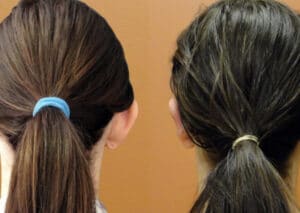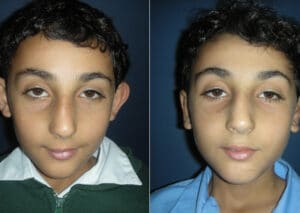
Ear Surgery or Otoplasty – the medical term for this procedure – is another form of elective plastic surgery and can be completed on both men and women. In this day and age the need to look as good as we can has become quite prevalent. How we look can also affects quite dramatically, the way we feel about our self and life.
This journey that individuals go on to look as good as they can, ranges from changing their lifestyle, work and leisure activities, but can also include changing the way they look by deciding to undergo plastic surgery. For many, this can be a positive step, resulting in greatly improved self-esteem, and then consequently the way they feel about life.
Why have Ear Surgery?
Ear surgery, which is often referred to as ‘Otoplasty’ can be defined as the ‘reshaping and positioning of the ears’. The difference that this surgery can make to an individual’s life has been well documented by doctors and is now common practice for people who have suffered with the embarrassment of unattractive ears.
There are many school children that are bullied for reasons that are out of their control. One of these reasons, for example, could be having larger than average ears. The constant name-calling and taunts that a child endures regularly can harm their self-esteem and affect their confidence for years. As these individuals grow up they can be troubled by the names they were once called and can then go on to search for something to remedy this.
Having ear surgery can increase your self-confidence and self-esteem; it can also help the individual deflect unwanted and derogatory comments directed at them. Having this surgery has obvious benefits for the short term, but also the entire life of the individual is enhanced as it opens up many doors for the person. For example, ear surgery can give an individual the confidence to apply for jobs and can even expand the choice for their hairstyles, which was limited prior to having the operation.
Ear surgery can be used to reshape, reposition and even make the ears smaller in size, creating perfectly proportional, symmetrical ears for the individual. Ear surgery is an extremely common procedure, which can be done on both adults and children, and is obviously an ideal remedy for individuals that have suffered with the negative effects of having larger or more prominent ears.
The procedure itself is relatively quick and can take anywhere between two to three hours. Ear surgery must be conducted under a general anaesthetic so must be taken seriously. The surgery is clever, as only two small incisions will be made, one in the natural crease behind the ear and one in the ear, which will not be visible to the eye.
A vast majority of ear surgery patients require their ears to be pinned back and would like them made smaller. Individuals can have one or the other procedure, or they can have both at the same time. The way the surgeon can make the ears smaller is by making two small incisions as mentioned before, removing excess skin and cartilage, re-shaping the cartilage underneath the skin and then stitching the incision back up. After the surgery, the ears will be wrapped up in sterile bandages in order to keep the ears in the correct position whilst healing and to reduce the chances of infection.
Having your ears pinned back requires the same two small incisions, where the surgeon will remove the excess skin and pull the ears back. The way the surgeon ensures that the ears will not go back to their natural position is by stitching them in place with insoluble stitches, which will need to be removed a short time after the surgery.
There are numerous risks and complications that can occur after having a procedure under general anaesthetic. These risks and complications will be discussed prior to having the procedure. Approximately one-third of patients who receive an anaesthetic during surgery will experience “anaesthesia sickness” or post-operative nausea and vomiting (POVN).
Infection is one of the most common complications of having ear surgery. If the infection is minor, then this can be addressed with a course of antibiotics however, if the infection gets worse, then this could lead to the growth of scar tissue and can be extremely debilitating and can result in surgical correction.
If your surgeon has had little experience and is poorly skilled, this can result in a complication that is known as ‘overcorrection’ which is where the surgeon may pin the ears too close to the head and setting the ears in the wrong position making them asymmetrical. This can make the individual look worse that when they started so you must ensure that you have completed a lot of research on your plastic surgeon prior to the surgery.
Blood clots in the ear are another risk and complication. Some blood clots can be removed using a needle and syringe or can be dissolved by the body’s natural healing process. However, if the blood clot is too big, you must seek professional help immediately as this could mean that the ear is not healing properly.
Q. Is ear surgery particularly painful?
A. Like all types of plastic surgery, this kind of surgery is no different. It is only natural to feel pain after the procedure. However, this should only last until having the stitches removed. If the pain does persist the surgeon will prescribe some pain relief for you.
Q. I am only 15-years-old, can I have ear surgery?
A. Yes, ear surgery is available to all ages as long as individuals under the age of 16 years have authorized consent from a parent or a legal guardian.
Q. After the surgery, how long will it take for the bruising and swelling to go down?
A. Once you have had the surgery the bruising and swelling will start to heal by the end of the week. However, the end of the swelling and bruising may not heal completely for two to three weeks. Everyone is different so it really depends on how fast you heal.




